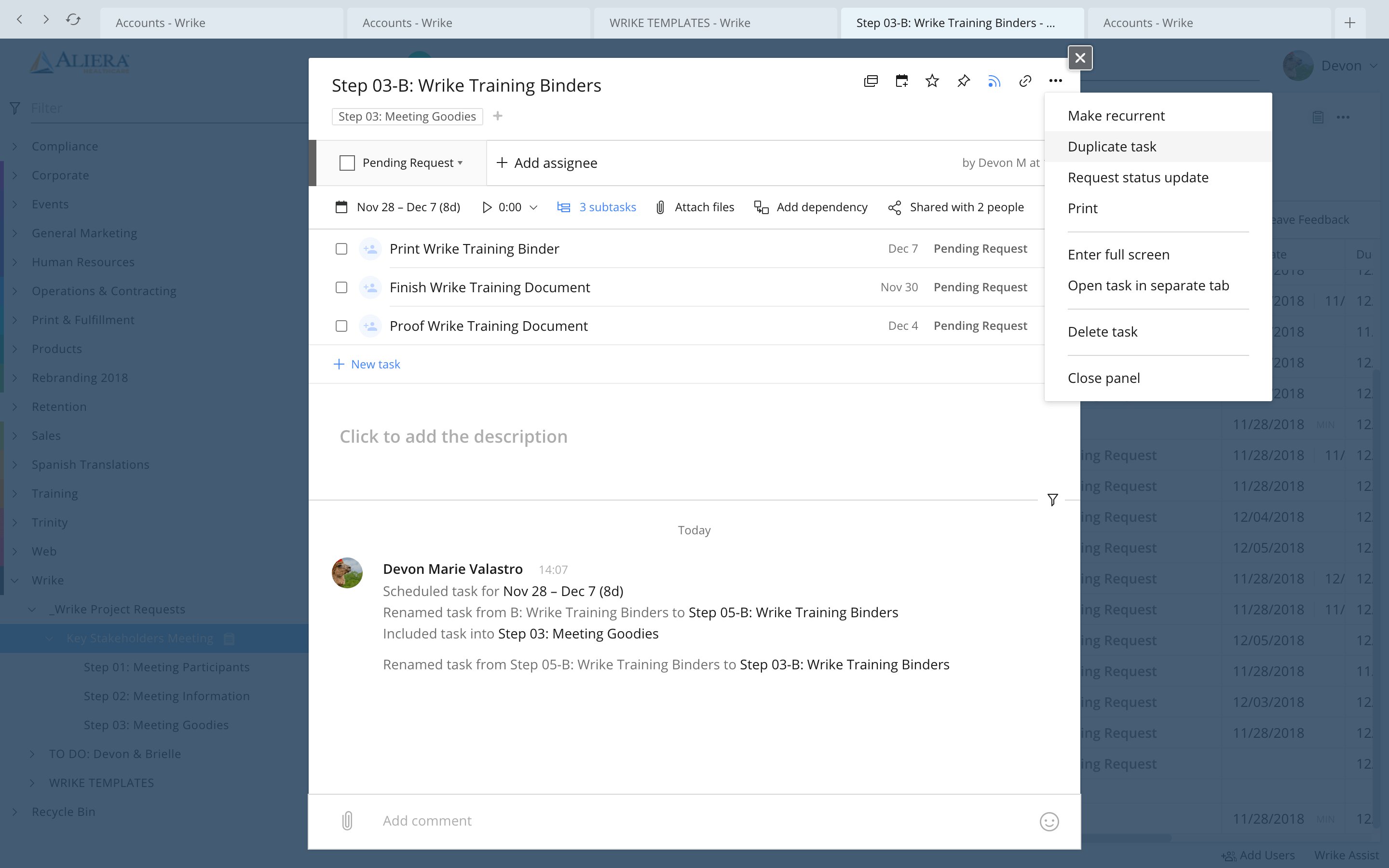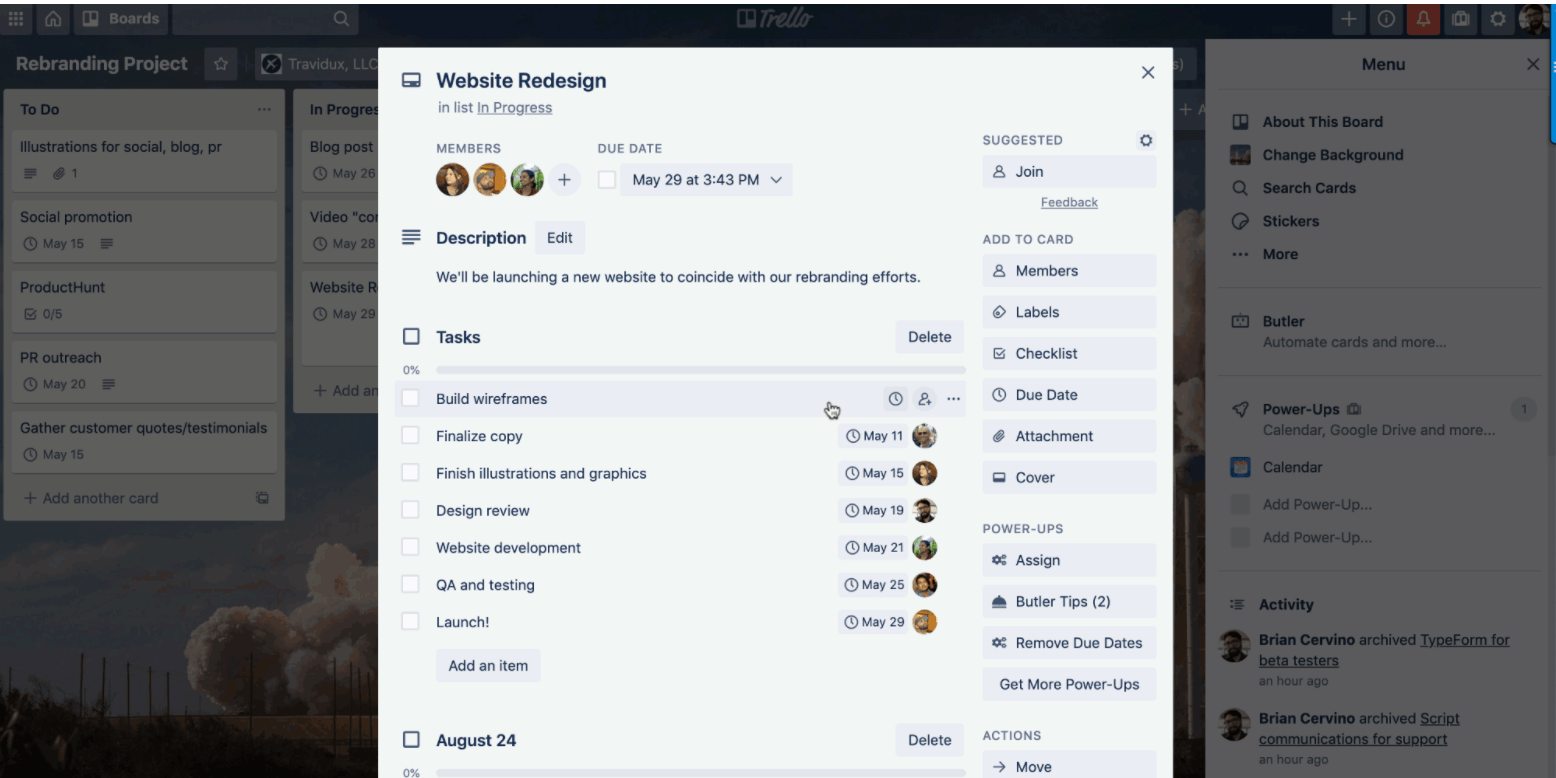Good project management is essential to the success of any business. From the project planning phase of a new initiative or campaign to the completion of a project and the evaluation of your success, your team will need to effectively balance multiple priorities, deadlines, and responsibilities.
That’s a little more difficult when a project involves multiple team members, but project management software like Wrike and Trello can help you stay in control of the process. While the two programs have some similarities, they also have a few key differences. We’ll take a look at both to help you determine which is the right choice for your business.
The similarities
Both Wrike and Trello are cloud-based programs that help you organize, manage, and collaborate on projects. They accommodate multiple users, allowing everyone on the project to visually monitor its progress.
The programs also share some features in common. Both let you delegate tasks, schedule deadlines and milestones, and integrate with your email through programs like Zapier and Mailchimp for a streamlined workflow.
While they operate similarly on the surface, their differences will make one a better fit for some businesses, goals, and situations.
Wrike
Wrike was founded in California in 2006 and has since grown into a company with employees located all over the world. This project management software helps your team accomplish work faster.

Features
- Built-in Gantt charts (which you can edit with drag-and-drop functions) to help you track project schedules and task dependencies
- The ability to create tasks and subtasks and assign each step to team members
- Automation of recurring tasks to help you save time
- Proofing tool that allows teams to leave feedback directly on uploaded files
- An activity stream to track the actions completed on a project and time tracking to help you evaluate the project’s cost
- @mentions on the activity stream to facilitate communication between team members and project managers
- Integrations with Outlook, Gmail, Slack, Zapier, Google Workspace, Microsoft Office, and more to streamline your work processes
- Built-in reporting showcasing the tasks at each stage of the process, which helps human resources managers balance work assignments
- Storage space ranging from 2 GB to 15 GB depending on your plan and an attachment size limit of 4 GB
Pricing
- Free for unlimited amount of users, storage space of 2 GB
- Team plan for 2 to 25 users: $9.80 per user, per month
- Business plan for 5–200 users: $24.80 per user, per month
- Enterprise plan for five users and up: custom pricing
- Pinnacle plan for five users and up: custom pricing
Learning curve
Signing up new users is easy and fast. A user can start with templates that provide recommendations on how to set up projects. Because Wrike has so many features, there’s a bit of a learning curve, but the software is still easy to pick up quickly.
Trello
Trello came on the market in 2014 to help businesses manage workflows and projects in different phases so they can get more done. It uses kanban board, list, and card views to keep your team organized.

Features
- Easy-to-understand visual interface with kanban boards and cards that can be customized with images, colors, and labels
- Drag-and-drop functionality that lets you add team members and assign them tasks
- @mentions to make it easy to communicate with your team on cards or though a discussion board
- The ability to set boards to public, private, or customized access to keep your work secure
- Trello Power-Ups like Jotform to build forms from scratch or by using a template
- Many integrations with platforms like Slack, Zapier, Dropbox, Google Drive, and more
- File upload size limited to 10 MB with the free plan and 250 MB with a paid plan
Pricing
- The free plan provides unlimited team members and cards, and up to 10 boards per workspace.
- The Standard plan includes unlimited power-ups, unlimited storage, and advanced checklists for $5 per user, per month. (billed annually)
- The Premium plan features increased security, app integrations, and unlimited workspace command runs for $10 per user, per month. (billed annually)
- The Enterprise plan features unlimited app integrations and starts at $17.50 per user, per month. (billed annually)
Learning curve
Trello wins in the ease of use category — it’s very easy to learn this program. Because Trello is so visual, it often appeals to artists and designers. It’s ideal for startups and small businesses. Many businesses also add their freelancers to their Trello boards to eliminate long email chains.
Wrike vs Trello: The best project management tool for your business
Trello is better suited for smaller businesses, while Wrike can scale up with your business as you become a larger operation. Wrike offers more expansive features for more detailed workflow management, while Trello’s board takes a more simplistic approach. Wrike offers more customization capabilities and has built-in Gantt charts, which Trello doesn’t offer.If you’re working in a fast-growing business and want project management software that you can truly customize and tailor to your needs, then Wrike may be the best choice for you. If you’re looking for software that can help you track the details of your project and is intuitive to use, then Trello may be the better choice. Ultimately, both programs have their pros and cons, and depending on your situation, one of the two will meet your needs.














Send Comment: